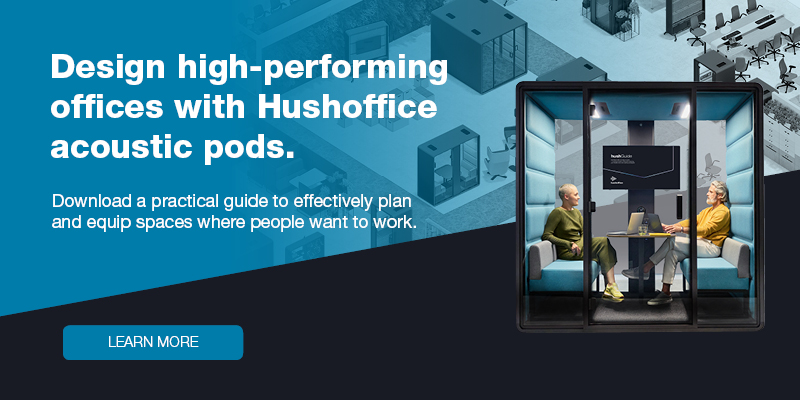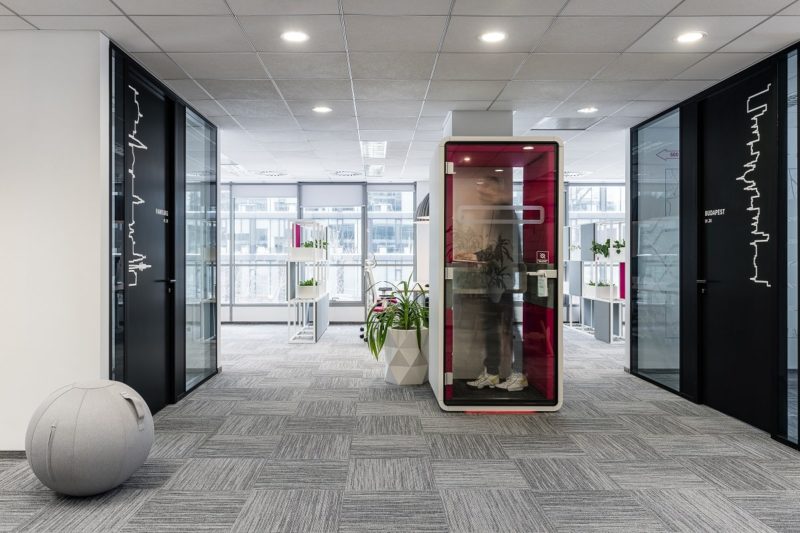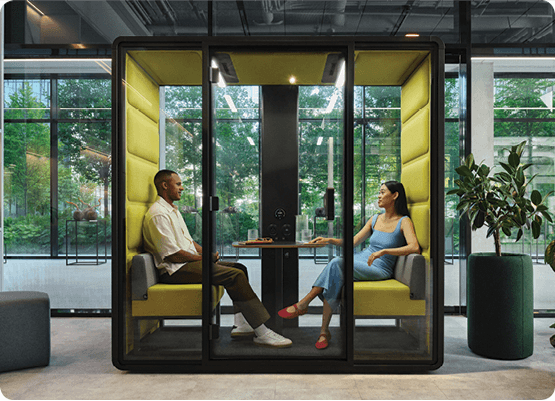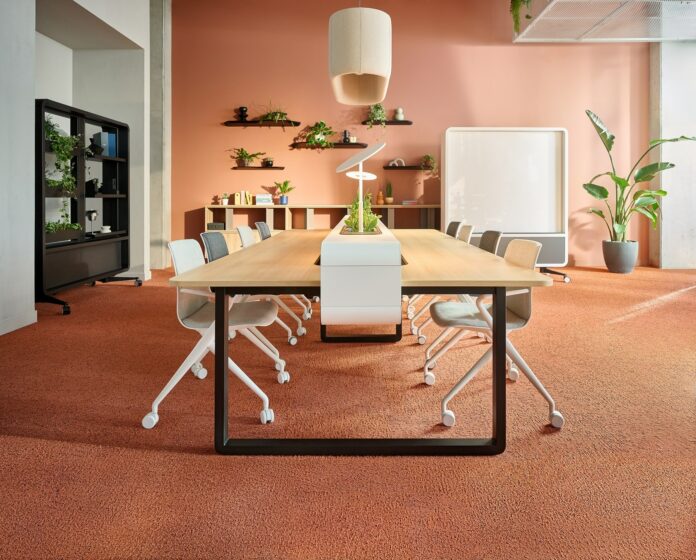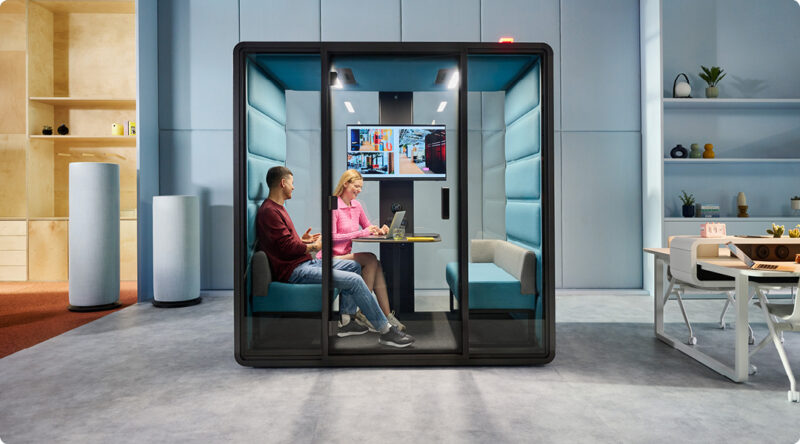Does an open plan office burn employees out?
- Posted on: 6 September 2021
- By: Hushoffice Team
KEY TAKEAWAYS
An open-plan office may lead to burnout. Noise, lack of privacy, diminished sense of autonomy are considered stressors that aggravate burnout.
Burnout is an issue for 77% of workers. Only in the US, it accounts for $125-190 billion in healthcare spending per year. Its major dimensions are fatigue, distancing from one’s job, lowered productivity, cynicism towards one’s work. According to research, burnt-out employees tend to be less productive as they are emotionally unengaged.
Employees are three times more likely to experience burnout today as compared to the pre-pandemic times. Thus, the crucial role of the hybrid office is to help keep work-life balance. A functional hybrid office offers a break for employees who struggle with distractions in their home office setups.
What can you do to deal with burnout in your office? Educate on its effects, invest in private spaces for employees, such as acoustic office pods, provide outdoor work areas, encourage using personal days and annual leaves.
Acoustic office pods make a smart investment for any company with a burnout issue. Firstly, pods help eliminate noise, which is considered the main open office stressor. Secondly, they ensure privacy and independence. A team that can manage its bandwidth more effectively is generally healthier and more productive.
As an “occupational phenomenon”, burnout affects 77% of workers.
Only in the US, it accounts for $125-190 billion in healthcare spending per year. What’s more, companies report that employee burnout contributes to higher turnover rates. Burnout is a danger of modern lifestyle. The World Health Organisation (WHO) has identified it as an “occupational phenomenon” and placed it in their International Classification of Diseases, naming it a syndrome that results from “chronic workplace stress that has not been successfully managed.” WHO lists the following as the key dimensions of burnout: energy depletion or fatigue, distance from one’s job or cynicism related to it, and diminished productivity.
Burnout is a danger of modern lifestyle. The World Health Organisation (WHO) has identified it as an “occupational phenomenon” and placed it in their International Classification of Diseases, naming it a syndrome that results from “chronic workplace stress that has not been successfully managed.” WHO lists the following as the key dimensions of burnout: energy depletion or fatigue, distance from one’s job or cynicism related to it, and diminished productivity.
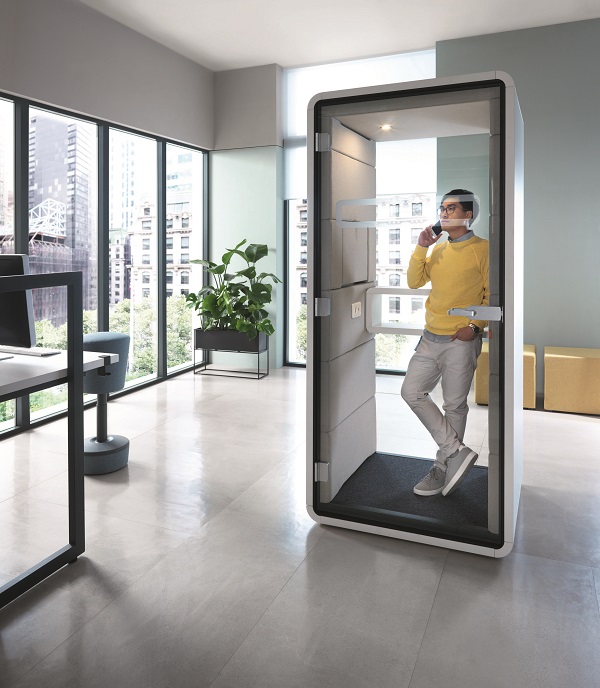
According to Deloitte reports, 77% of US workers have experienced burnout, and more than a half of this group has experienced it more than once. A 2017 survey by Kronos shows that 95% of retail employers claim that burnout is “sabotaging their workforce.” In fact, we can call it a national crisis.
5 factors indicative of burnout
Increased absence and procrastination
Negative attitude or cynicism towards work
Diminished productivity
Both physical and mental exhaustion and dissociation
Physical symptoms of stress (stomach aches, headaches, chest pain etc.)
The bottom line is burnt-out employees fail to produce.
Delos is a team of professionals: scientists and researchers who promote well-being in the workplace. They are aware of their numbers on burnout and they comprehend the “occupational phenomenon” well. Their most valuable insight is that “engagement” lies on the opposite end of the burnout spectrum. A burnt-out employee is an emotionally unengaged employee.
Surely, output plummets when motivation is gone. “Diminished employee engagement may be indicative of the ongoing burnout process with energy giving way to fatigue, involvement being replaced with cynicism, and efficiency turning into ineffectiveness,” says the Delos team.
It all leads to a vicious circle. The burnt-out teammate is running on fumes, trying to ignore the state of being overwhelmed, fatigued and afraid of missing the mark. As a result, they become even more exhausted and less productive.
Burnout is how your body communicates that you’ve been on autopilot for far too long, carrying on despite exhaustion or setbacks, instead of stepping back and gaining a new perspective. Being burnt-out equals being emotionally absent. There is no quick fix except to give yourself time to rest and regain your healthy balance. At this point, quiet spaces like acoustic pods are really helpful as they provide employees with sensory breaks in a private environment tailored to their needs.
– explains Mateusz Barczyk, Senior Brand Manager, Hushoffice
Employees are three times more prone to burnout today than they were in the pre-pandemic times.
Such is the conclusion of a survey conducted by Flexjobs coordinated in partnership with Mental Health America. One of the reasons for this increase may be the lack of clear separation between work and life. A worker who cannot disconnect from work is a worker who cannot relax. Consequently, they jeopardise their best capital: mental energy, enthusiasm, and physical stamina. Employee engagement is weakened and productivity drops.
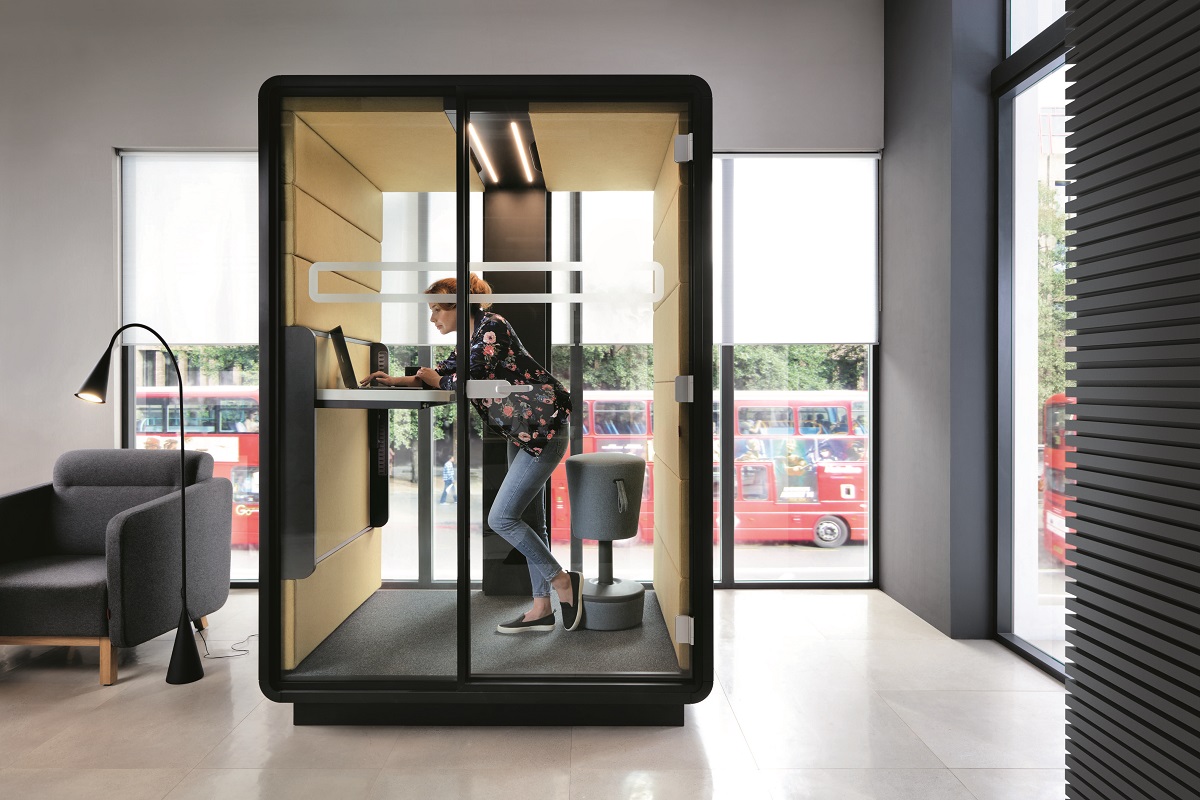
When you work from home full-time, work and life start to blur together. Consequently, it requires more effort to disconnect from work. Unplugging from work is crucial for mental health and wellness as it allows our brain to recharge. Thus, quiet spaces such as private pods, isolation booths or soundproof rooms may be of great help. Their advantage is that they allow workers to balance quiet, focused work and lively collaboration.
One of the primary roles that the office plays in today’s hybrid world is providing work-life balance.
When you walk in and out of the office, shifting between gears seems much easier. What’s more, a well-designed office offers relief to employees whose home office setup is either physically uncomfortable or simply distracting. In a nutshell, a present-day office is a space that employees rely on for both quiet focus and lively collaboration. It also provides separation between work and life.
In our hybrid world, the office is a staple. It may help employees maintain that ephemeral work-life balance. Effective design is the key: an open-plan office should provide workers with various options. It should be zoned off and offer private workspaces, such as office booths and pods that allow people to work depending on their preferences. The result? Employees not only rely on, but really look forward to their office on-site days
– adds Mateusz Barczyk, Senior Brand Manager, Hushoffice.
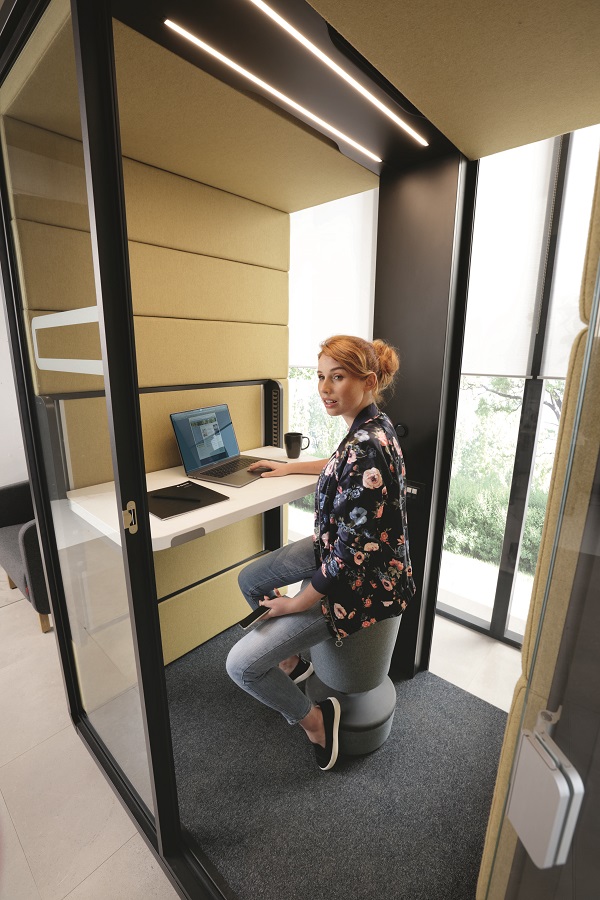
5 quick-fix ideas to prevent burnout in your open-plan office:
1. Educating on the severity of burnout (emphasising it’s not just something “in your head”) and highlighting the importance of rest in daily life.
2. Investing in private spaces, such as office pods for employees to relax, have sensory breaks or, if needed, work within a calm oasis.
3. Creating outdoor work areas.
5. Providing paid annual leaves.
Work pods are a great solution to help prevent burnout. They realise open-plan office potential by completing the layout and blocking out stressful distractions. In the present-day hybrid world, private pods can transform the office into a place where employees can thrive.
Pods make a really powerful soundproofing solution for the entire workspace. They minimise sound interference for the over-stimulated while reducing echoes in the space, and enhancing broad sound quality. As a result, the workplace becomes more peaceful and effective for all employees.
– says Eliza Donek, Product Manager, Hushoffice
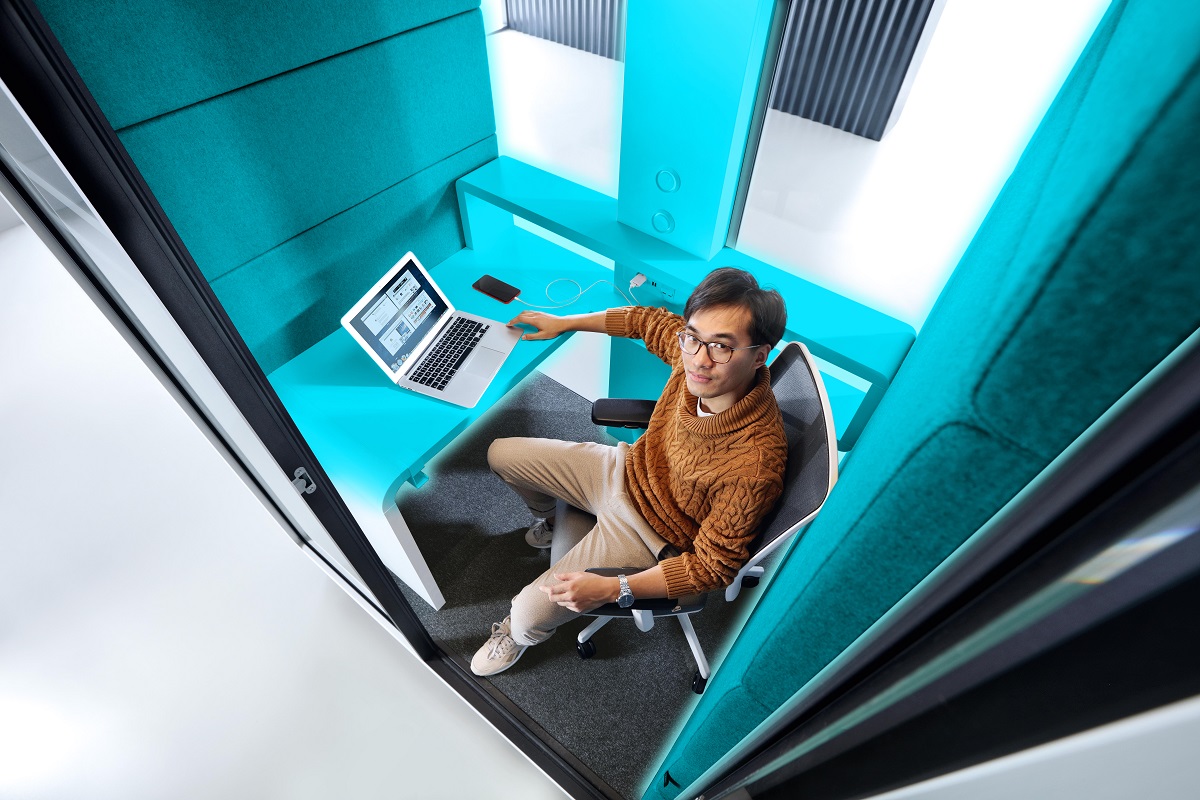
Office privacy pods are a highly effective solution as they are good value for money. They provide numerous benefits for all employees on a noisy open-floor plan. On one hand, a pod blocks the noise made by a user inside. On the other hand, it cancels out distractions and ensures comfort and privacy for the user.Thus, office pods enhance the office’s soundscape for all by blocking out noise that fills the space. So, they work for both the pod user and the employees in general.
Pleasant ambience and improved office soundscape benefit all kinds of employees: introverts, extroverts, the hyper-sensitive ones, or those experiencing burnout. And that’s the point. Pleasant acoustics directly contribute to good mood, good focus, and, as a result, good work.
Hush pods frequently asked questions
Are the pods really quiet?
They are comfortably quiet. Think calming murmur. Hush pods muffle unpleasant noise. When you are in a pod, open-office noise becomes a pleasant hum. The pod is specially designed for it as, in fact, a bit of diffuse sound is healthy, ~40 dB.
What actually is a privacy pod?
A privacy pod is a movable, sound-resistant office booth that can be used for private calls, meetings or focused work. It makes a popular open-space solution due to its flexibility (pods are small, modular, and stand-alone) and its ability to reduce office noise.
What kind of pods does Hushoffice offer?
Hushoffice offers the following:
- hushHybrid designed for individual video calls,
- hushPhone for private phone calls,
- hushWork for focused work at the desk,
- hushWork.sit&stand for a sitting and standing working setup,
- hushTwin for limited areas,
- hushMeet for 4-person meetings,
- hushMeet.S for one-to-one meetings,
- hushMeet.open – a semi-enclosed booth for more lively 4-person meetings,
- hushMeet.open.S – for semi-enclosed meetings for 2 people,
- hushMeet.L – a modular conference booth for larger meetings.
Is it possible to frost Hush pod glass panels to ensure more privacy?
Of course! Depending on your preference, you can order a clear or frosted rear glass panel.

